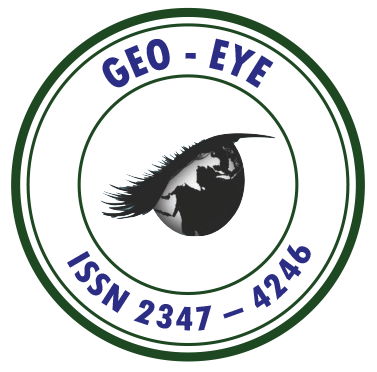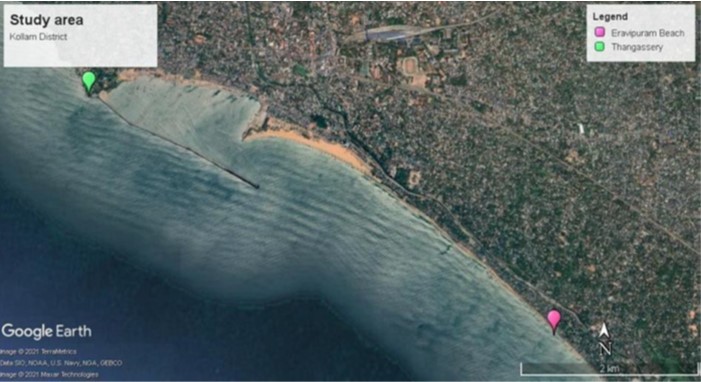
Geo-Eye
Department of Geography & GIS

Department of Geography & GIS

Geo-Eye
Year: 2023, Volume: 12, Issue: 2, Pages: 54-58
Original Article
Athulya Raveendran Pillai Vasanthakumari1, Lancelet Thankom Simpson1, R G Reju1, Rengith Rajan Pillai1∗
1 Department of Geography, Sree Sankaracharya University of Sanskrit, Kalady, Ernakulam, 683574, Kerala, India
*Corresponding author email: [email protected]
Received Date:24 August 2023, Accepted Date:18 December 2023
Shoreline change is considered to be a serious issue because of the changing nature of oceans and its influence on people and land. The vital term shoreline can be defined as the rate at which shore gets worn or accreted due to wave action, sea level-rise or any supplementary hazards and processes that affect the land. All the natural processes are conserved to attain their equilibrium, coast as a physical feature is always in a dynamic state trying to change, and nature continually works for preserving its balance. The coastal regions of India are specified with varied ecosystem, high productivity and thickly populated, has increased its very own importance. The coastal areas are subjected to vulnerable hazards, and it affects the coastal community and its geomorphic features. The present study has been conducted along the coastal areas of southern Kerala, especially Kollam district with the help of multi- temporal satellite images of the years 1973, 1988, 2002, 2018 and 2022. The Digital Shoreline Analysis System (DSAS) technique is used for calculating the coastal erosion and accretion rates. The present study focuses on the pre and post tsunami effects and major and minor erosion and accretion occurred in Kollam. Tsunami is a series of waves caused by an earthquake, underwater volcanic eruption, landslide or other abrupt disturbances. The Indian Ocean tsunami of December 26, 2004, not only affected the Bay of Bengal coast of India, but also hit into the Arabian Sea coast with major damages in Kerala. Destructive waves were occurred through tsunami, and it has made changes in the coastal geomorphology. The study could be analyzed micro level shoreline change rate due to tsunami effects in association with anthropogenic activities occurred in the coastal areas of Kollam district.
Keywords
Digital Shoreline Analysis System (DSAS), Coastal Erosion, Accretion, Tsunami
© 2023 Vasanthakumari et al. This is an open-access article distributed under the terms of the Creative Commons Attribution License, which permits unrestricted use, distribution, and reproduction in any medium, provided the original author and source are credited.
Published By Bangalore University, Bengaluru, Karnataka
Subscribe now for latest articles and news.